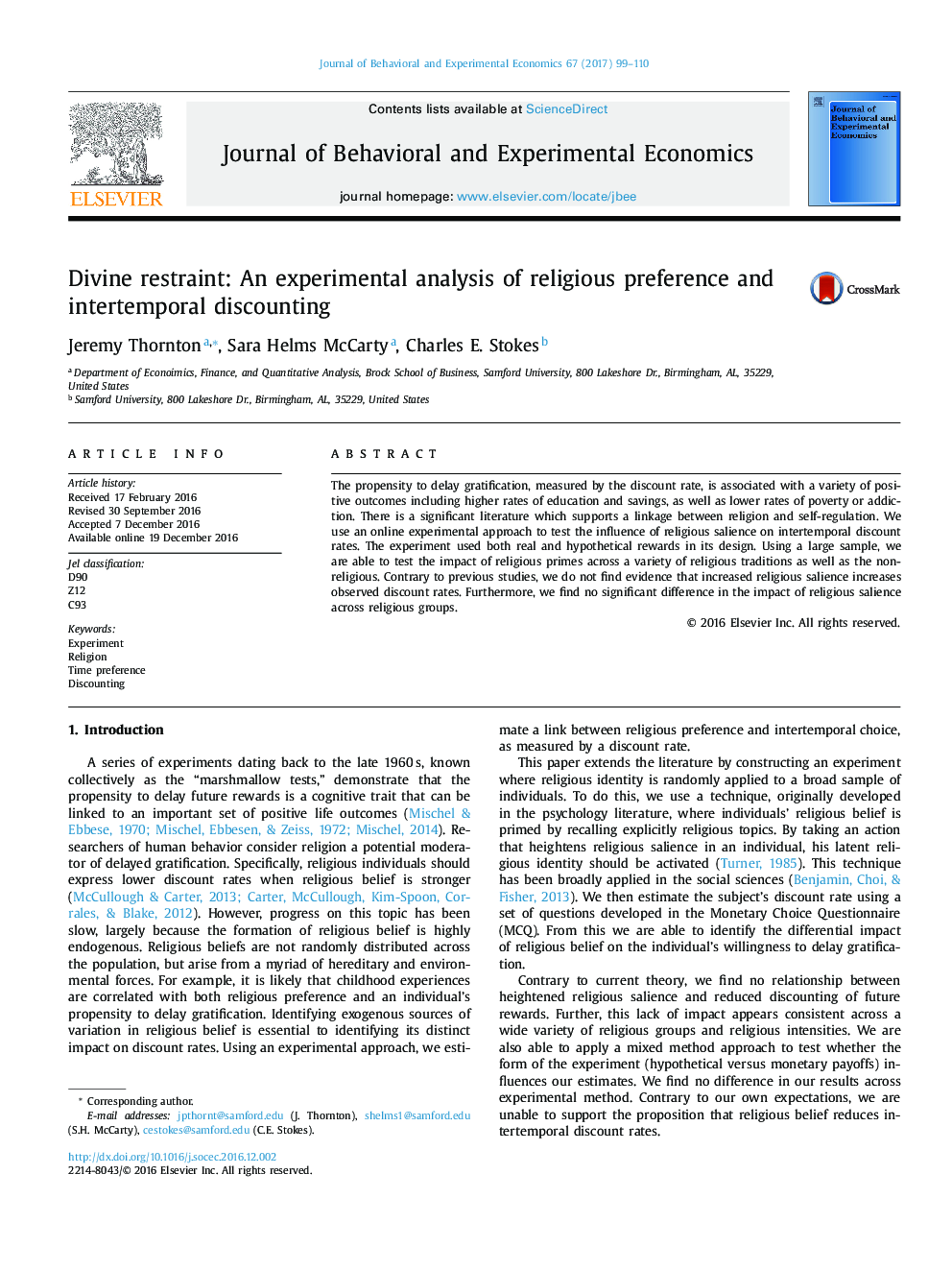| Article ID | Journal | Published Year | Pages | File Type |
|---|---|---|---|---|
| 5034145 | Journal of Behavioral and Experimental Economics | 2017 | 12 Pages |
â¢The paper uses an online experiment to test the influence of religious salience on intertemporal discount rates, using both real and hypothetical rewards.â¢The paper extends the literature by drawing a large and heterogeneous sample that examines this relationship over multiple religious sects.â¢Contrary to previous studies, we do not find a significant relationship between religious salience and intertemporal discounting.â¢There were no systematic differences between religious sects, though some groups had weak statistical power.
The propensity to delay gratification, measured by the discount rate, is associated with a variety of positive outcomes including higher rates of education and savings, as well as lower rates of poverty or addiction. There is a significant literature which supports a linkage between religion and self-regulation. We use an online experimental approach to test the influence of religious salience on intertemporal discount rates. The experiment used both real and hypothetical rewards in its design. Using a large sample, we are able to test the impact of religious primes across a variety of religious traditions as well as the non-religious. Contrary to previous studies, we do not find evidence that increased religious salience increases observed discount rates. Furthermore, we find no significant difference in the impact of religious salience across religious groups.
